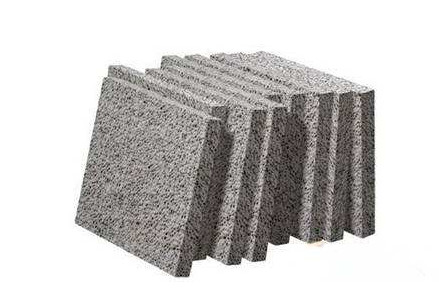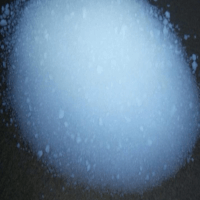Professional solutions on concrete addtives, Concrete Foaming Agent, Superplasticizer, CLC Blocks Additives, and foaming machine
(Concrete superplasticizer: compatibility of superplasticizer and cement)
Definition and introduction
High efficiency superplasticizer for concrete is an additive that can significantly reduce the amount of mixing water under conditions where the slump of concrete is basically the same. Specifically, it is a multi-faceted chemical agent that can be used to improve the performance of concrete as well as decrease the quantity of water required for mixing.
The main mechanism of efficient superplasticizers is to adsorb on the surface of cement particles, reduce their surface energy, and form a strong electric field adsorption layer on their surface, causing the dispersion of cement particles and significantly increasing their fluidity. This can reduce the demand for mixing water while maintaining the same slump of the concrete.
It should be noted that the compatibility between high-efficiency superplasticizers and cement can affect the important properties of concrete, such as flowability, setting time, and strength development. Therefore, in practical applications, it is necessary to choose high-efficiency superplasticizers with good compatibility with cement and, at the same time, formulate and use them reasonably according to specific engineering requirements and material characteristics to achieve the best results.
Characteristics
Reducing water consumption: Efficient superplasticizers can significantly reduce water consumption during the concrete mixing process, thereby reducing the shrinkage and cracking tendency of concrete and improving its strength and durability.
Increase fluidity: Efficient superplasticizers can improve the fluidity and pumpability of concrete mixtures, making them easier to pour and vibrate, reducing construction time and labor intensity.
Do not change the setting time of concrete: The high-efficiency superplasticizer basically does not change the initial and final setting times of concrete and will not have a negative impact on the hardening process of concrete.
Enhancing concrete performance: Efficient superplasticizers can enhance the impermeability, freeze-thaw resistance, corrosion resistance, and other properties of concrete, improving its durability.
Environmental protection: superplasticizers that are efficient are not contaminated with harmful substances to human health or the environment. They are green and eco-friendly building materials.
Cost saving: The use of high-efficiency superplasticizers can reduce the amount of cement used, thereby reducing the cost of concrete.
Superplasticizer is compatible with cement
The compatibility between concrete high-efficiency superplasticizers and cement refers to the ability of high-efficiency superplasticizers to effectively reduce the water consumption of concrete while maintaining good fluidity when applied in cement. The compatibility mainly depends on the chemical properties and physical structure of high-efficiency superplasticizers and cement.
The main function of high-efficiency superplasticizers is to adsorb on the surface of cement particles, reduce their surface energy, and form a strong electric field adsorption layer on their surface, dispersing cement particles and significantly increasing their fluidity. There is a viewpoint that the molecules of high-efficiency superplasticizers are mainly adsorbed on cement products in large quantities, while there are very few adsorbed on cement particles. There are also views that high-efficiency superplasticizers adsorb on the surface of cement particles, reducing their surface energy and forming a strong electric field adsorption layer on their surface, causing the dispersion of cement particles and significantly increasing their fluidity.
The compatibility between high-efficiency superplasticizers and cement can affect the important properties of concrete, such as flowability, setting time, and strength development. Efficient superplasticizers with good compatibility can significantly reduce the water consumption of concrete while maintaining good fluidity, which helps to improve the workability and durability of concrete.
On the contrary, if the compatibility is poor, not only can the water consumption not be reduced, but it may also lead to problems such as segregation and bleeding in the concrete, seriously affecting the quality of the project.
In practical applications, we need to select high-efficiency superplasticizers and cement with good compatibility based on specific engineering requirements and material characteristics. At the same time, the need for multi-component compounding of external additives and the preparation of additives with specific engineering requirements have become important aspects for additive manufacturers to strengthen on-site services.
People initially thought that superplasticizers were incompatible with cement, often when cement or concrete set abnormally. However, long before the invention of the superplasticizer for concrete, people were using Portland cement to prepare concrete. Inappropriate selection of cement raw materials and inappropriate raw material formulation may cause two types of abnormal condensation. One is called flashing, and the other is called false setting. The two types of coagulation have one thing in common that is cement or concrete will lose fluidity for more than ten minutes after adding water. Flash condensation is accompanied by heat release, and the temperature rises sharply, but false condensation does not have this phenomenon. At the same time, these two kinds of abnormal coagulation are far from the conditions for testing concrete coagulation according to the penetration method. That is, when the penetration resistance is 3.5 MPa and 28 MPa, the initial and final setting states are reached, which is a kind of difference between water and silicate. The reaction has nothing to do with the abnormal reaction. The cement and sand are not cemented together due to the gelation reaction of cement and water, forming a real coagulation.
Why do people think that superplasticizer are compatible with cement?
The cause of abnormal coagulation is often because the content of tricalcium aluminate in the clinker is too high, or the ratio between the added gypsum and tricalcium aluminate is inconsistent, or the temperature during cement grinding is too high, resulting in dehydration of dihydrate gypsum. It turns into hemihydrate gypsum. Hemihydrate gypsum reacts quickly when it meets water, causing the concrete to lose fluidity, or the mismatch of alkali and sulfur in the fresh concrete liquid causes the concrete to set abnormally, or the dihydrate gypsum is not used in the cement. The use of anhydrite with low solubility, etc., or the addition of triethanolamine (non-superplasticizer) as an early strength agent, can cause abnormal concrete condensation and other reasons. There are various reasons, but they are not caused by superplasticizers. The superplasticizer existed before it was used in concrete. Because of the water-reducing effect of the superplasticizer, the water consumption in the concrete is reduced, which aggravates these problems and becomes extremely prominent. At first, it was a new type of material as a superplasticizer, so people often misunderstood it as a superplasticizer.
Application of high-performance superplasticizer in concrete
Control of mud content in sand
When the mud content is greater than 2%, it will affect the fluidity of concrete. For fine sand, the method of adjusting the difference can be used to promote the improvement of the workability of concrete. If the fluidity of concrete is reduced, the water reducing molecules will be affected by clay because the soil structure can adsorb water reducing molecules and reduce the content of superplasticizers. Therefore, in order to improve the performance of the superplasticizer, other additives should be added to the superplasticizer.
Incompatible with most materials
Due to the incompatibility between high-performance superplasticizers and most materials, when using superplasticizers, they should be used separately from other superplasticizers in concrete. Therefore, before replacing the superplasticizer, the container should be cleaned first, and then the new superplasticizer should be added to the container. During the production of the superplasticizer, it also needs to be separated for production. At the same time, superplasticizers cannot be compatible with cement. In recent years, the issue of immiscibility between superplasticizers and cement has attracted people's attention. The adsorption capacity of superplasticizer molecules varies among different brands of cement. Therefore, in order to ensure the fluidity of concrete and avoid the occurrence of superplasticizer molecule adsorption problems, it is necessary to adjust the molecular structure of the superplasticizer.
Gas content control
In order to improve the workability of concrete, it is necessary to strengthen the reasonable control of the air content of superplasticizers. Firstly, when using gas content, it should be used in accordance with relevant standards, using a process of first eliminating and then introducing to retain high-quality small bubbles. If the air content needs to be increased in concrete, an appropriate amount of air entraining agent should be added to the superplasticizer. Currently, the main air entraining agent that is not compatible with high-performance superplasticizers is the rosin thermal polymer air entraining agent.
Temperature control
In high temperature weather, the slump of the superplasticizer will increase, while in low temperature weather, the slump of the superplasticizer will also increase. It can be seen that high-performance superplasticizers are easily affected by temperature. Therefore, in order to avoid this impact, we should strengthen temperature control during the actual construction process to avoid temperature changes. At the same time, the structure of high-performance superplasticizers has a certain degree of adjustability. Under different temperatures, it is necessary to adjust the content of adsorption groups, which can also avoid the impact of temperature on concrete performance.
Application of delayed setting technology
During the long-term use of concrete, in order to ensure that it can be adjusted and rebuilt and to provide convenience for later maintenance work. Therefore, in the actual construction process, we can use the retarding time of the superplasticizer to blend with high-performance superplasticizers. If these two admixtures are affected by weather, their performance will decrease, mainly because they cannot be dissolved in other materials, so attention should be paid during construction.
Supplier
TRUNNANO is a supplier of superplasticizer with over 12 years experience in nano-building energy conservation and nanotechnology development. It accepts payment via Credit Card, T/T, West Union and Paypal. Trunnano will ship the goods to customers overseas through FedEx, DHL, by air, or by sea. If you are looking for high-quality concrete additives, please feel free to contact us and send an inquiry. (sales@cabr-concrete.com).
(Concrete superplasticizer: compatibility of superplasticizer and cement)









